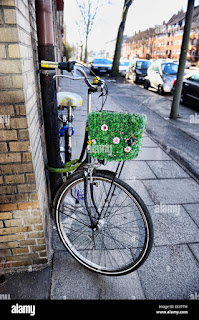Two people, about the same age, have just achieved a major career--and financial--milestone. They decide to purchase a new vehicle for their commutes, and for pleasure. One buys a 'Benz. The other opts for a Brooklyn bike--or, if they want to splurge, a Brompton. Why?
Well, an answer can be found in a University of Cologne study on cycling patterns and trends. The Mercedes-Benz customer I've mentioned could be someone with a successful business or who's just scored a major contract. The bike buyer, on the other hand, probably is more educated, more likely to be in a profession--and to live in an urban area.
 |
| Image from REI |
According to the University of Cologne study, those bike buyers accounted for nearly all of the increase in cycling in Germany from 1996 through 2018. At the end of that period, people with a high level of education (Arbitur) were cycling, on average, 70 minutes per week: twice as much as they were pedaling at the beginning of that era. That also means they're riding three times as much as rural dwellers without Arbitur, whose cycling habits were all but unchanged.
 |
| From We Love Cycling |
So what accounts for the differences I've mentioned? Well, according to the study, people with Arbitur are more likely to live in urban areas--like Cologne--where cycling to work, school or shop is a practical alternative. On the other hand, people in rural and suburban areas have to travel greater distances and buy more and larger items--which are harder to transport on bicycles--when they shop.
But, according to the study--conducted by sociologist Dr. Ansgar Hudde--there is another reason, perhaps more compelling to the educated folks themselves, why they choose to two pedals and two wheels rather than a gas pedal and an internal combustion engine for transport or other short trips. It isn't cost: Most people with Arbitur, at least in Dr. Hudde's study, can afford a car or to use mass transit. It also isn't time, though I have to wonder whether the experiences of folks in Cologne (or Hamburg, Berlin or Dusseldorf) parallel those of folks like me, who can ride to work in less time than the same trip would take on a train or bus, or even a car.
Rather, a chief reason why those educated urban dwellers ride their bikes is the same reason why corporations quote Dr. Martin Luther King in their advertising: signaling. Those companies want to signal that they care about diversity and are otherwise socially conscious. Likewise, urban folk with Arbitur are sending a message that they care about the environment or health, just as the guy with the shiny new Mercedes or Lexus is showing friends, family and others that he's "made it."
(Now I'm recalling that not so long ago, a stereotype of professors was that they drove Volvos. They were more expensive than most American cars but, from what I understand, very well-made. But their rather stodgy appearance contrasted with Mercedes polish or the frankly ostentatious looks of American-made luxury cars like the Cadillac Eldorado or Lincoln Continental. So those academic folk were signaling that they weren't signaling that they'd "made it.")
Anyway, I found the Cologne study interesting for several reasons--one of which is how closely its findings parallel what I've observed here in the US. While some people--men, mainly--in poor and immigrant communities ride bikes for cost or convenience, once their economic circumstances improve (and many of them move away), they buy cars, abandon their bikes and never look back.

